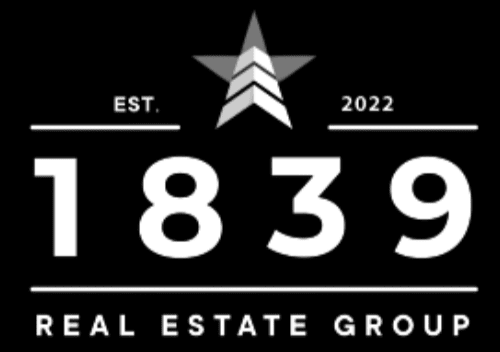Elevating Urban Living: How Mixed-Use Development Benefits Urban Areas
Mixed-Use Development Demand
Connecting Communities
As urban areas continue to grow, the demand for mixed-use development has surged, providing significant benefits to cities and their residents. By combining residential, commercial, and recreational spaces, mixed-use developments create vibrant, walkable communities that foster social interaction and economic growth. According to ICSC, cities are increasingly advocating for mixed-use projects to integrate convention centers with surrounding neighborhoods, enhancing accessibility and community engagement.
Mixed-use developments not only enhance the quality of life for residents but also attract businesses and investors looking for lucrative opportunities. By promoting a blend of uses within a single area, these developments reduce the need for long commutes, decrease traffic congestion, and support sustainable urban growth. For investors and business owners, this presents a unique opportunity to capitalize on the growing trend and contribute to the revitalization of urban spaces.
To learn more about how to identify prime commercial land for development, check out our guide on how to identify prime commercial land for sale.
Urban Development Trends
The trend towards mixed-use development aligns with broader urban development patterns observed across major cities in Texas, including Austin. As the demand for diverse living and working environments increases, developers are responding with innovative projects that cater to the evolving needs of urban dwellers.
Recent data from the Texas Real Estate Research Center highlights the impact of economic conditions on the real estate market. Despite high interest rates reducing effective demand for many assets, mixed-use developments continue to gain traction due to their multifaceted appeal.
| Metric | 2022 | 2023 | % Change |
|---|---|---|---|
| Annual Sales Volume (acres) | 719,018 | 279,509 | -61.2% |
| Average Price per Acre | $4,448 | $4,670 | +5% |
| Total Dollar Volume | $3,200 million | $1,305 million | -59.2% |
While overall market activity has decreased, the rising prices across Texas’ regions indicate a sustained interest in high-value land investments. For instance, Region 2 (Far West Texas) experienced a 23.6 percent increase in average prices per acre, despite a decline in total acres sold. This underscores the growing appeal of mixed-use developments as a strategic investment in a fluctuating market.
For investors seeking to navigate these trends and maximize their returns, understanding the key factors driving urban development is crucial. Our detailed analysis on market trends for commercial land in Austin provides valuable insights into the current landscape and future opportunities.
By staying informed about urban development trends and leveraging the benefits of mixed-use projects, investors can make strategic decisions that align with the evolving demands of urban areas. Whether you are looking to purchase land for residential, commercial, or mixed-use purposes, our comprehensive resources and expert advice will guide you through the process. Explore our articles on land investment opportunities in Austin and top areas for commercial development in Texas to discover the potential of mixed-use developments in your investment strategy.
Housing Market Insights
As we explore the benefits of mixed-use development in urban areas, understanding the housing market insights is crucial for investors and business owners. This section delves into the trends in residential construction growth and the dynamics of homeownership and rental rates.
Residential Construction Growth
The trend in new residential construction has shown positive movement. In June 2024, privately-owned housing starts reached a seasonally adjusted annual rate of 1,353,000, marking a 3.0% increase from the revised May 2024 estimate (Census.gov). This growth indicates a robust market for residential construction, presenting ample opportunities for land investment and development in urban areas.
| Month | Housing Starts (Seasonally Adjusted Annual Rate) |
|---|---|
| May 2024 | 1,313,000 |
| June 2024 | 1,353,000 |
For more insights on identifying prime commercial land for development, visit our guide on how to identify prime commercial land for sale.
Homeownership and Rental Rates
The homeownership rate in the 1st Quarter of 2024 was reported at 65.6%, which is statistically similar to the rate in the 1st Quarter of 2023 (66.0%) (Census.gov). This stability in homeownership rates suggests a steady demand for residential properties, making mixed-use developments an attractive option for investors looking to diversify their portfolios.
| Quarter | Homeownership Rate (%) |
|---|---|
| Q1 2023 | 66.0 |
| Q1 2024 | 65.6 |
On the rental side, the rental vacancy rate in the 1st Quarter of 2024 stood at 6.6%, which is also not statistically different from the rate in the 1st Quarter of 2023 (6.4%) (Census.gov). This consistency in rental vacancy rates indicates a stable rental market, which is beneficial for mixed-use developments that include residential rental units.
| Quarter | Rental Vacancy Rate (%) |
|---|---|
| Q1 2023 | 6.4 |
| Q1 2024 | 6.6 |
For more detailed strategies on developing multifamily properties, check out our article on multifamily land development: best practices and tips.
Investors looking to explore commercial real estate opportunities in Austin and Texas can benefit from keeping an eye on these housing market trends. For further reading on top areas for development, visit our article on top areas for commercial development in Texas.
Commercial Real Estate Trends
Understanding the trends in commercial real estate is crucial for investors and business owners seeking to capitalize on the benefits of mixed-use development in urban areas. Here, we analyze the sales of new properties and business formation statistics to provide insights into the current market landscape.
Sales of New Properties
The sales of new properties serve as a significant indicator of the health of the commercial real estate market. In June 2024, the sales of new single-family houses were at a seasonally adjusted annual rate of 617,000. This marked a slight decrease of 0.6% from the revised May 2024 estimate of 621,000 (Census.gov). Despite this marginal decline, the overall trend in property sales provides valuable insights for those considering land investment opportunities in Austin and other areas in Texas.
| Month | Sales of New Single-Family Houses (seasonally adjusted annual rate) |
|---|---|
| May 2024 | 621,000 |
| June 2024 | 617,000 |
Analyzing these figures helps us understand the market dynamics and identify potential investment opportunities. For more information on identifying prime commercial land for sale, visit our guide on how to identify prime commercial land for sale.
Business Formation Statistics
Business formation statistics provide another crucial perspective on the commercial real estate market. In June 2024, the total U.S. Business Applications were 431,246, reflecting a 1.7% increase from May 2024 (Census.gov). This uptick in new business formations indicates a robust entrepreneurial spirit and a growing demand for commercial spaces.
| Month | Total U.S. Business Applications |
|---|---|
| May 2024 | 423,050 |
| June 2024 | 431,246 |
The increase in business applications suggests a positive outlook for commercial real estate, particularly in urban areas where mixed-use developments can cater to the diverse needs of new businesses. Investors can leverage these trends to explore top areas for commercial development in Texas and maximize their return on investment.
By staying informed about the latest trends in sales of new properties and business formation statistics, we can make well-informed decisions and capitalize on the benefits of mixed-use development in urban areas. For further insights into commercial land investments, visit our articles on investing in industrial land in Austin: a guide and market trends for commercial land in Austin.
Rural Land Market Analysis
Analyzing the rural land market provides crucial insights for investors and business owners interested in land investment opportunities in Austin and across Texas. Two primary factors affecting this market are interest rates and market activity trends.
Impact of Interest Rates
High interest rates continue to impact the rural land market, reducing effective demand for many appreciable assets, including rural land. According to the Texas Real Estate Research Center, the fourth quarter of 2023 saw a significant decline in annual sales volume, slipping by 44.6 percent year-over-year. Despite this drop in sales volume, prices rose by 5 percent to $4,670 per acre statewide from year-end 2022 through year-end 2023.
The following table highlights the impact of interest rates on rural land prices and sales volume:
| Year | Sales Volume (Acres) | Price per Acre ($) |
|---|---|---|
| 2022 | 720,000 | 4,450 |
| 2023 | 279,509 | 4,670 |
This data indicates that while higher interest rates have subdued demand, they have also led to an increase in land prices. Total dollar volume declined by 59.2 percent over the prior annualized total, with a total of 279,509 acres changing hands in 2023, down 61.2 percent compared to 2022. Market activity has fallen below normal levels at high prices.
Market Activity Trends
Market activity trends in rural land markets reveal a mixed performance across different regions. Prices across Texas’ seven regions continued to rise, with some regions experiencing significant increases. For instance, Region 2 (Far West Texas) saw a 23.6 percent jump in prices. However, every region saw a decline in total acres sold, indicating decreasing demand.
The following table provides a regional breakdown of market activity trends:
| Region | Price Increase (%) | Acres Sold Decrease (%) |
|---|---|---|
| Far West Texas | 23.6 | 61.2 |
| Other Regions | Varying | Decrease |
Comparing sales from 2022 to 2023 across Texas’ 33 Land Market Areas (LMAs) showed a mix of gains and losses in prices statewide, with the quarterly median up 4 percent overall. Eleven LMAs experienced falling prices, while 11 LMAs showed price increases. Every LMA except Canadian Breaks saw annualized declines in sales volumes.
Tighter financial conditions and uncertainty about future economic and financial conditions continued to subdue activity in Texas rural land markets through the first quarter of 2024. For investors and business owners, understanding these trends is crucial for making informed decisions about how to identify prime commercial land for sale and leveraging economic development zones for land investments.
By staying informed about the impact of interest rates and market activity trends, investors can better navigate the complexities of rural land investment. For more detailed analysis and strategies, explore our guides on retail land investment strategies in Texas and multifamily land development: best practices and tips.


